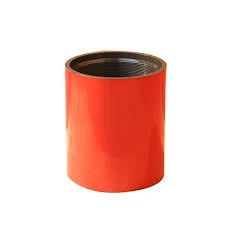- Afrikaans
- Albanian
- Amharic
- Arabic
- Armenian
- Azerbaijani
- Basque
- Belarusian
- Bengali
- Bosnian
- Bulgarian
- Catalan
- Cebuano
- Corsican
- Croatian
- Czech
- Danish
- Dutch
- English
- Esperanto
- Estonian
- Finnish
- French
- Frisian
- Galician
- Georgian
- German
- Greek
- Gujarati
- Haitian Creole
- hausa
- hawaiian
- Hebrew
- Hindi
- Miao
- Hungarian
- Icelandic
- igbo
- Indonesian
- irish
- Italian
- Japanese
- Javanese
- Kannada
- kazakh
- Khmer
- Rwandese
- Korean
- Kurdish
- Kyrgyz
- Lao
- Latin
- Latvian
- Lithuanian
- Luxembourgish
- Macedonian
- Malgashi
- Malay
- Malayalam
- Maltese
- Maori
- Marathi
- Mongolian
- Myanmar
- Nepali
- Norwegian
- Norwegian
- Occitan
- Pashto
- Persian
- Polish
- Portuguese
- Punjabi
- Romanian
- Russian
- Samoan
- Scottish Gaelic
- Serbian
- Sesotho
- Shona
- Sindhi
- Sinhala
- Slovak
- Slovenian
- Somali
- Spanish
- Sundanese
- Swahili
- Swedish
- Tagalog
- Tajik
- Tamil
- Tatar
- Telugu
- Thai
- Turkish
- Turkmen
- Ukrainian
- Urdu
- Uighur
- Uzbek
- Vietnamese
- Welsh
- Bantu
- Yiddish
- Yoruba
- Zulu
bull plug vs hex plug
Bull Plug vs. Hex Plug Understanding the Differences
When it comes to industrial and mechanical applications, the choice of plug is crucial for ensuring proper functionality and safety. Among the various plug types available in the market, the bull plug and hex plug are two commonly used designs. Each serves a specific purpose and is characterized by unique features that cater to different requirements. This article will explore the differences between bull plugs and hex plugs, highlighting their applications, advantages, and construction.
Understanding Bull Plugs
Bull plugs, also known as round plugs, are typically designed for applications where a secure and pressure-tight seal is required. They are made with a rounded, often thicker tip that enhances durability and resistance to wear and tear. The primary purpose of a bull plug is to block the opening of a pipe or fitting, preventing leakage and ensuring that the internal system remains pressurized.
One of the key features of bull plugs is their ease of installation. Designed for quick attachment and detachment, they can be easily installed using hand tools or automated machines. This factor greatly reduces downtime during maintenance or repair operations. Bull plugs are commonly used in various industries including oil and gas, water treatment, and chemical manufacturing, where they often serve as closures in hydraulic cylinders, pipelines, and pressure vessels.
Exploring Hex Plugs
Hex plugs, also known as hexagon plugs, are named after their hexagonal shape. This design allows for easy installation with standard hex wrenches, making them user-friendly and convenient. Hex plugs are primarily used to seal threaded openings, ensuring a leak-proof joint while also allowing for easy access when removal is necessary.
bull plug vs hex plug

These plugs are typically found in applications involving hydraulic and pneumatic systems, as well as in plumbing and automotive settings. Hex plugs are versatile and come in a variety of sizes and materials, including brass, stainless steel, and plastic, which can be chosen based on the specific environment and pressure requirements.
One of the significant advantages of hex plugs is their strength and stability. The hexagonal shape provides a larger surface area for the wrench, allowing for greater torque, which enhances the seal and reduces the risk of loosening over time. Their ease of use and durability makes them a popular choice for professionals in various trades.
Key Differences and Considerations
While both bull plugs and hex plugs serve critical roles in preventing leaks and securing openings, they differ primarily in design and application. Bull plugs are often used in situations requiring a robust seal and quick adjustments, while hex plugs are preferred for threaded openings where ease of access and removal are paramount.
When choosing between bull plugs and hex plugs, it's essential to consider the specific application, the type of material being sealed, and the environmental conditions the plug will face, such as temperature and pressure. Understanding these factors will ensure that the right type of plug is used, securing system integrity and preventing costly leaks.
Conclusion
In conclusion, both bull plugs and hex plugs have unique attributes that make them suitable for various applications. Their design and functionality cater to diverse industrial needs, whether it's a straightforward sealing task or a more complex hydraulic system requirement. By understanding their characteristics, users can make informed decisions that enhance operational efficiency and safety. As with any mechanical component, choosing the right type of plug is vital for maintaining system performance and ensuring longevity.
-
Tubing Pup Joints: Essential Components for Oil and Gas OperationsNewsJul.10,2025
-
Pup Joints: Essential Components for Reliable Drilling OperationsNewsJul.10,2025
-
Pipe Couplings: Connecting Your World EfficientlyNewsJul.10,2025
-
Mastering Oilfield Operations with Quality Tubing and CasingNewsJul.10,2025
-
High-Quality Casing Couplings for Every NeedNewsJul.10,2025
-
Boost Your Drilling Efficiency with Premium Crossover Tools & Seating NipplesNewsJul.10,2025







